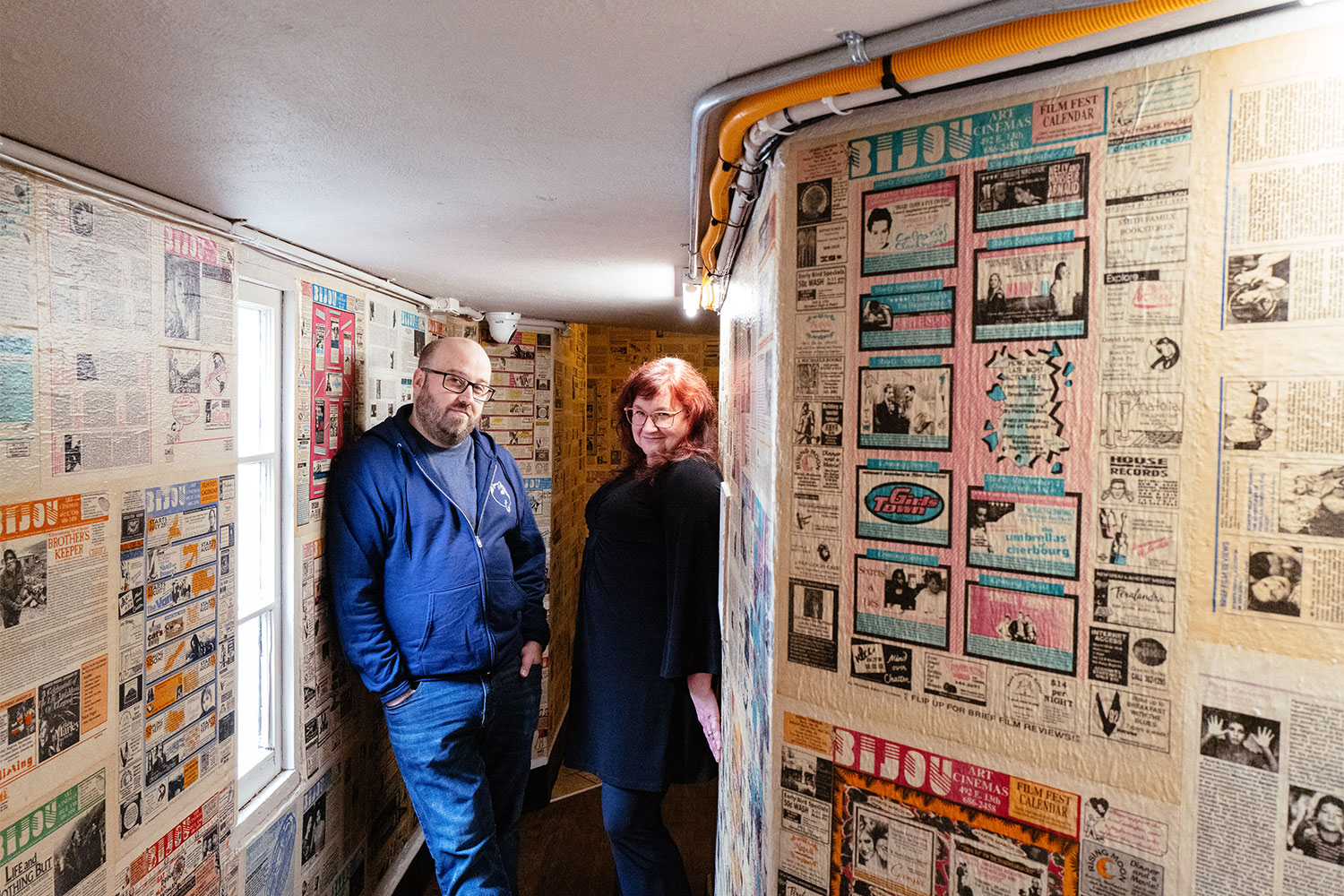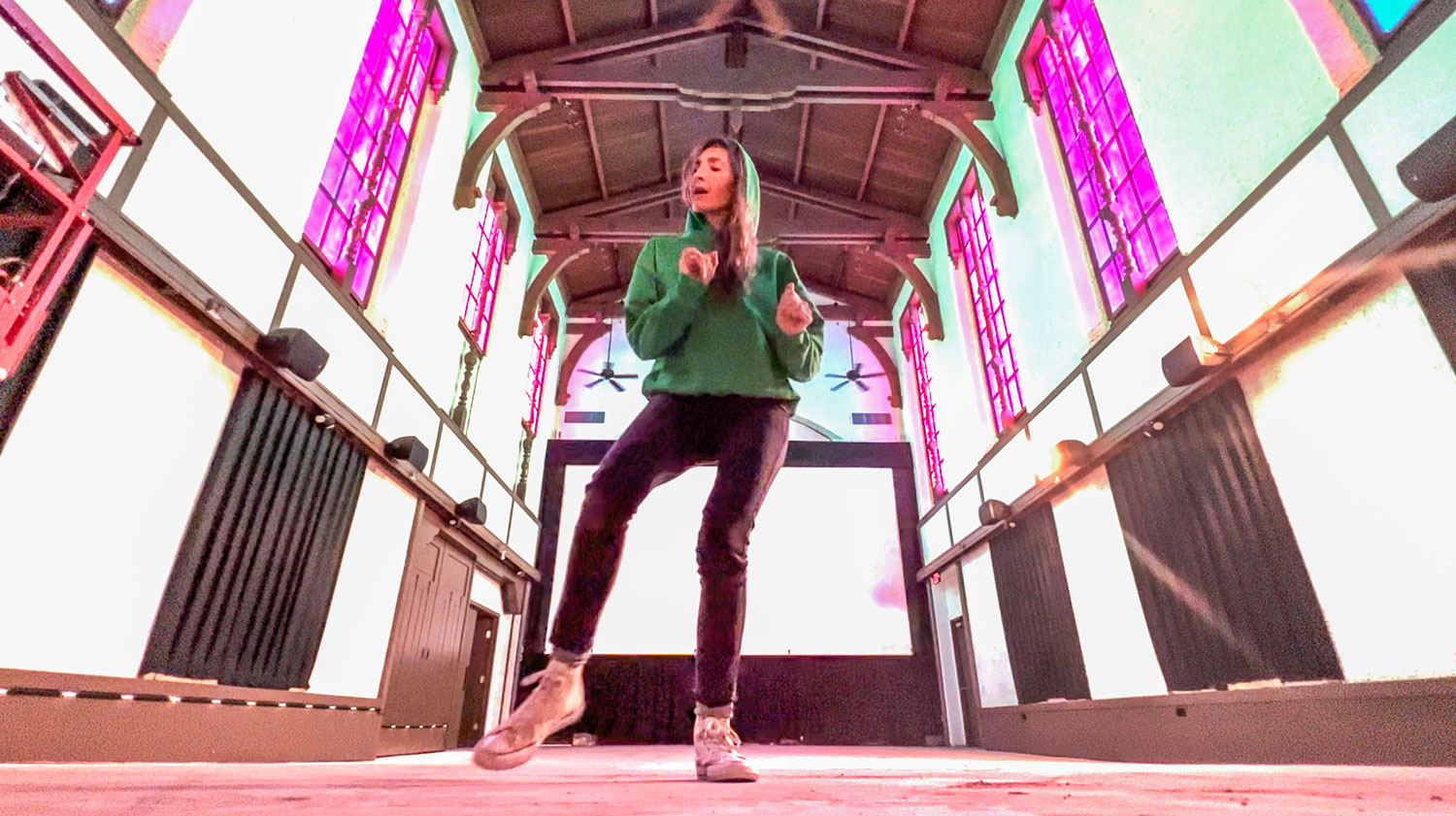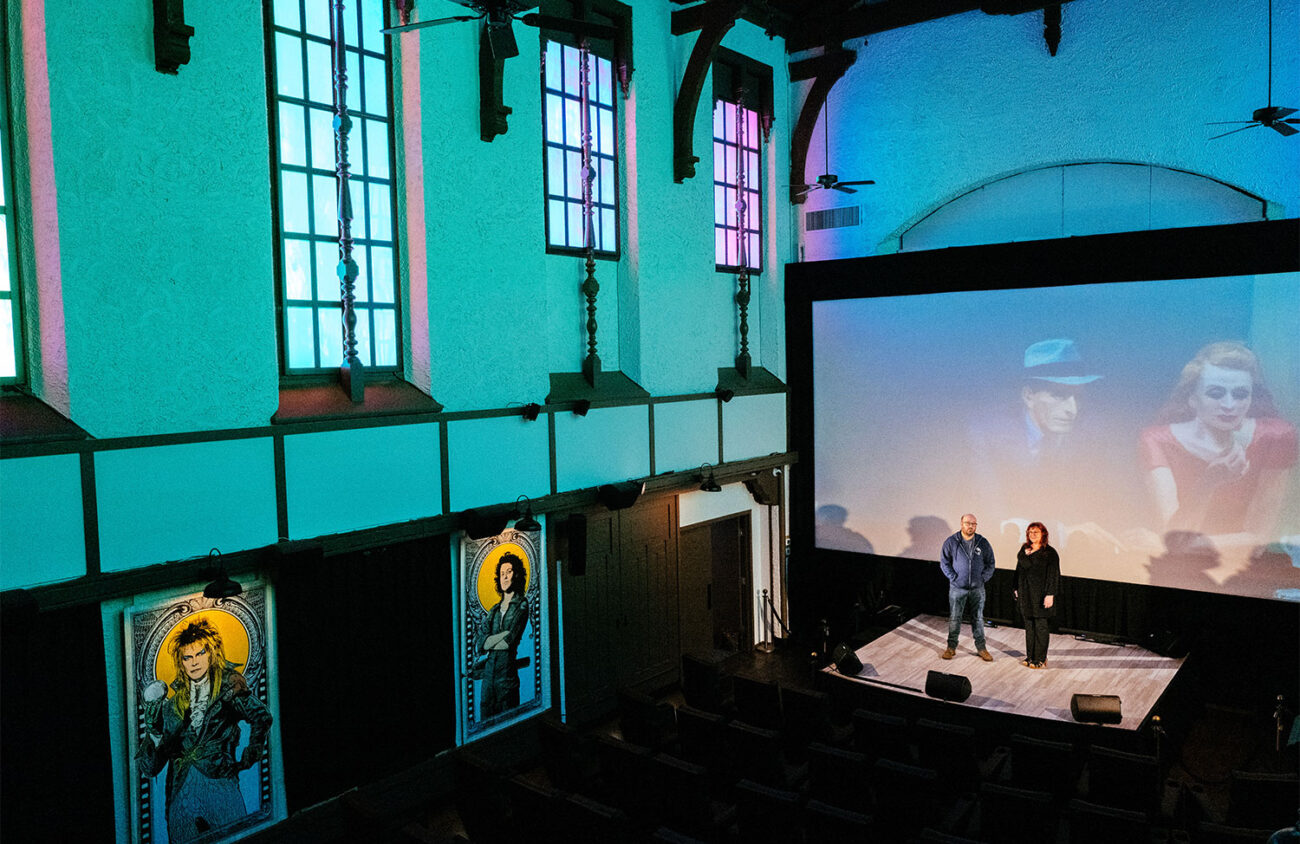In many ways, a building is the lead character in this story.
The building in question is no mere building, of course, but more an artifact with an actual aura — both a historic marker and a living relic without which Eugene would not quite be Eugene.
Located on 13th Avenue between Mill and Ferry streets, within spitting distance of the University of Oregon campus, the Wilcox Building is home to the former Bijou Art Cinemas, now redubbed and revitalized as the Art House.
Its name is bluntly fitting: every small-to-medium, liberal-minded college town worth its salt does — or at least should — have an “art house,” a quirky independent theater that serves up a heady dose of foreign, cult, old, new and otherwise hip and artsy films.
Architecturally speaking, the place is an anomaly up here in brutalist Niketown: An unlikely example of the Spanish Colonial Revival style, with its white stucco walls, vaulted ceilings, cathedral windows and inner courtyard, the building looks like a transplant from the NorCal gold rush — say, from Mission San Juan Batista, where Alfred Hitchcock filmed the final scenes of his 1958 masterpiece Vertigo.
The reference is fitting, because Vertigo — remastered, cleaned up and splashed huge on a big new screen — is exactly the kind of gem the Art House might feature during a Hitchcock retrospective.
When the Bijou suddenly closed its doors in March 2021, smack in the middle of the pandemic (which, obviously, hit movie theaters particularly hard), a chill went through Eugene’s population of devout cinephiles. The theater had been the area’s hub of independent, auteur and foreign films since 1981, from British historical dramas and Scandinavian bummers to cult hits, offbeat documentaries and grindhouse classics, and everything in-between.
Enlarge

“The Bijou closing was big news,” says Ed Schiessl, the managing director of the newly minted Art House. “Everybody knows it shut down, but they don’t know it reopened.”
Schiessl has history with the place, to say the least. One of his first jobs in high school was as a projectionist and night manager of the Bijou, in 1998; from there he became a co-owner in 2010, then expanded to open the Broadway Metro downtown in 2013, which he still manages; then split off from the Bijou in 2016; and in August 2022, Schiessl took the leap of reopening the moribund Bijou as the Art House.
One of his first goals was to revamp the aging and sometimes creaky features of the moviehouse, including replacing the cramped seating as well as installing new projection and sound systems in both theaters. “We’re upgraded and we’re comfortable,” Schiessl says.
For anyone who frequented the old Bijou, the updates are welcome and often stunning, traipsing a delicate balance between honoring the history of the place and giving it a modern yet retro-cool updating — including the pomo-vintage movie posters by local outfit Blunt Graffix adorning the walls of Auditorium 1, the Art House’s main theater.
“Like a lot of community members, we didn’t want to see such a meaningful cultural institution slip away,” says Schiessl, who honored the Bijou’s heritage by incorporating the theater’s beloved late cat, Boo, into the Art House logo. “Having invested so much of our lives into the Bijou, it really felt like our responsibility as its former stewards to step in and save it, again.”
Louise Thomas is the Art House’s promotional director. Like Schiessl, she has a long association with the theater, having been instrumental in the running of the original Bijou; in fact, she was already there, working behind the scenes (as it were) when Schiessl was brought aboard as a teenager.
Perhaps the foremost historian of the building and the theater’s storied existence, Thomas also says she felt a strong sense of duty in making sure the place survived as a cultural entity. “Since its shutdown during the quarantine,” she says, “those of us who have long been associated with the Bijou have been beset by questions about its ultimate disposition. Certainly this suggests that there is a Bijou-shaped hole in Eugene’s cultural landscape.”
Thomas explains that the building’s owner, Jan Rush, reached out last year in order to let her and Schiessl know that the previous owners had terminated their lease, and that she, Rush, was insistent and supportive of efforts to keep the theater going.
Enlarge

“She clearly understood how important the Bijou is to the community,” Thomas says of Rush, “and that the original Bijou folks from the ‘80s and ‘90s possess the authentic heart, soul and vision to sustain what makes that space unique while adapting to modern tech and market conditions.”
As the saying goes, where there’s a will there’s a way, but the way can be twisty, precipitous and fraught with obstacles. In the case of the Art House, those obstacles are significant, if not outright Sisyphean, which both Schiessl and Thomas acknowledge. Not only is there the notorious and industry-wide shrinkage of moviegoing audiences thanks to the pandemic and its slow, halting recovery, but there have been tectonic changes in the economics and distribution within the movie industry itself — everything from the advent of streaming services to the mainstream marketing of independent movies to big cineplexes, and beyond.
Add to this the local and sometimes parochial confusion about the demise and current state of the old Bijou, and the Art House — despite the brains, passion and legacy behind its revitalization — can be fighting a sort of tabula rasa situation, inventing itself anew against a slew of entrenched expectations. In short, news of the theater’s death has been greatly exaggerated, and in fact the current crew is doing everything it can to bring the moviehouse thriving into this strange new world.
“While the timing is not ideal… attendance for indie theaters has only rebounded to about 60 percent of what it was pre-pandemic… there was never any question about whether we needed to step up and rescue the theater,” Thomas says.
“Things are getting better, but slowly,” says Schiessl, who points out that the Broadway Metro itself survived the downturn with a series of emergency grants and loans as well as “side hustles” like home delivery, Blu-ray rentals and private screenings during the pandemic shutdown. “It’s going to take a long time to really see what the permanent fallout on indie theaters is post-pandemic, but for now we can see that there’s very little audience support for the kind of indie and art-house programming that historically sustained theaters like the Bijou.”
As with many businesses rocked by the economic and social disruptions of the coronavirus, the team behind the Art House has been forced to pivot, and is still in the process of doing so. While maintaining a traditional line-up of indie, repertory and foreign films, along with some first-run hits, Schiessl landed upon the idea of funding dedicated film series — sort of mini film fests — through Kickstarter campaigns. Already the Art House has featured career retrospectives from David Lynch and the Italian master Federico Fellini.
“In both cases,” Schiesslsays, “supporters pledged enough tickets to fund out-of-pocket costs of the series up front. The crowdfunding model has been an inspiration in many ways. It acts not only as a positive feedback loop for our programming, but also as a community builder… It’s a unique opportunity, in that we can float some unusual ideas and know if the community is on board without taking a huge financial risk.”
Such community engagement, Schiessl says, is crucial not only in getting people back to the movies but in positioning the space itself as a cultural hub, which is a big part of his focus. On that front, the Art House has already hosted live music in its larger auditorium. The idea is to foster a sense that the theater is something of an artistic hub, where folks can see anything from concerts and live broadcast of the National Theater and Met Opera, to art exhibitions on screen and literary readings.
Enlarge

“At this moment,” Schiessl says, “I’m pretty focused on keeping a lively film schedule and ramping up live music and community events. But on a long enough timeline, I’d like to make this a place where cinephiles and other artists and aesthetes come for an espresso or a beer, even when they’re not seeing a show.”
In this regard, the building itself, preserved but improved, is perhaps its own best advertisement and incentive to explore new possibilities. “The Wilcox building is a really unique and beautiful venue,” Thomas says, “but it’s always had a lot of unrealized potential. It’s our intention to invite the community back into a reinvented space with a much broader scope of opportunities and events than have been possible before.
“Things were in rough shape when we took possession of the space last winter,” she continues, “but after several months of cleaning and repairs, it’s never felt more inviting.”
